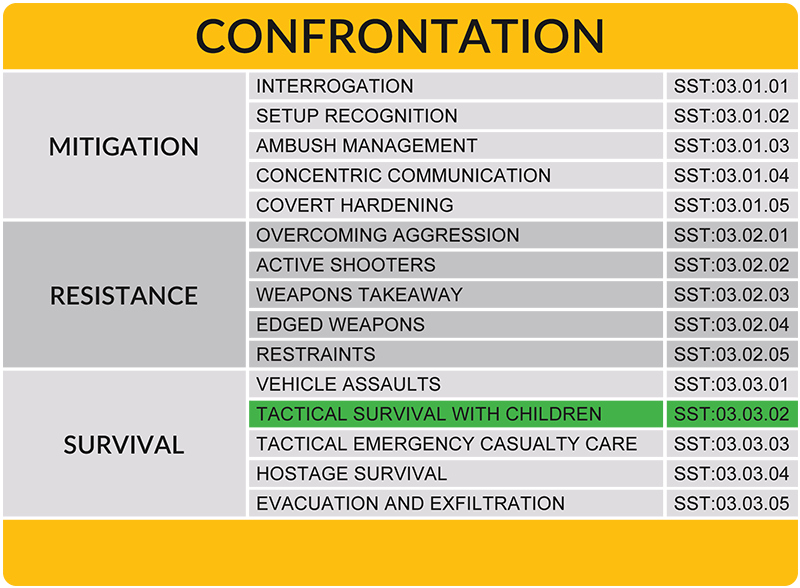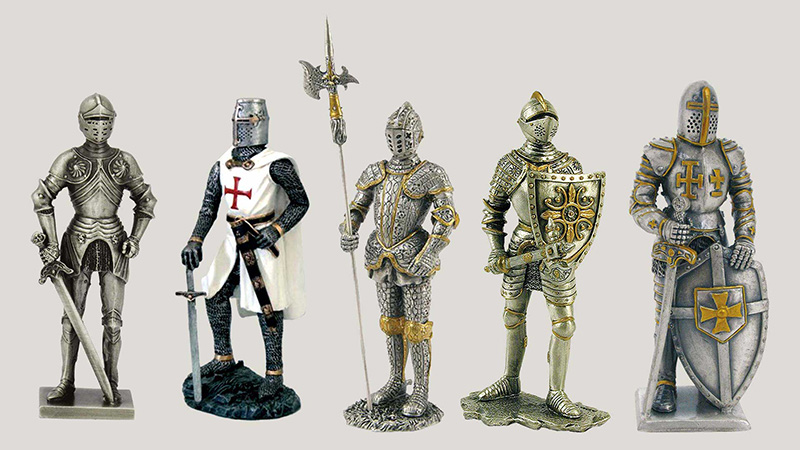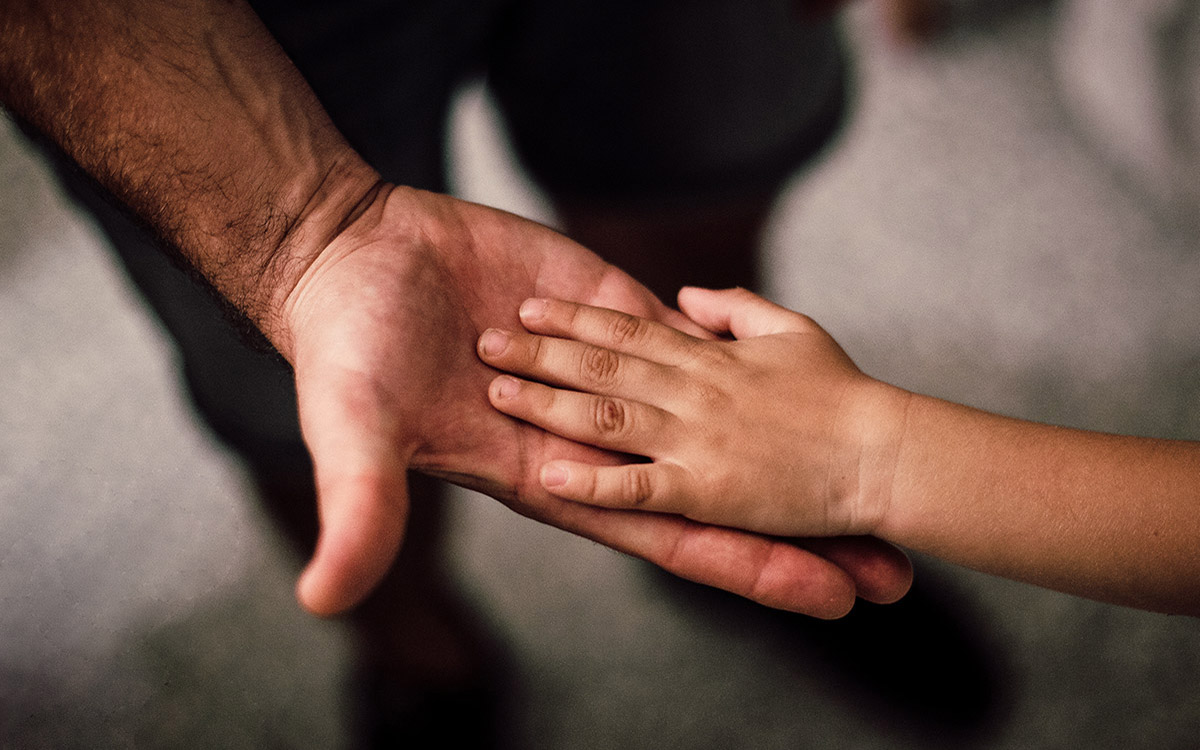In some ways the year 2020 may end up being among the most challenging since the Great Depression in the 1930s or World War II in the 1940s. Children who grew up during those times had to cope with things that were in many ways outside the norm for times before or since.
In a similar way, children today are facing severe disruptions to their normal routines due to the Pandemic. They may also be exposed to information and images concerning the riots, looting, and killings that are taking place on the streets of several major cities. Finally, children also have a way of picking up on the stress faced by their parents during these challenging times.
The Panoplia.org online Soft Skills and Tactics (SST) course is based on an on-site training course intended to prepare individuals to serve in hostile environments in the United States and overseas. Unfortunately, this is not open to the public at this time. Many of the individuals who take our on-site course are parents. This being the case, as they learn new skills they sometimes ask how these can be practiced during normal times when they’re with their children. Some of the things we share in response have served as the basis for section 03.03.02 of the SST course. This is titled, “Tactical Survival with Children.”
We’re praying for children and their parents during these unprecedented times. We sincerely hope that parents have access to resources that will help them and their children thrive during this challenging season. While thinking through this, we thought it might be helpful to share an extended excerpt from the “Tactical Survival with Children” portion of the online SST course. We’ve pasted this below, and hope you find this beneficial.
THE FOLLOWING EXCERPT IS FROM THE PANOPLIA.ORG SST COURSE, TOPIC 03.03.02:

SST: 03.03.02 Tactical Survival With Children
Before moving on from Vehicle Assaults to Tactical Emergency Casualty Care we wanted to address a topic about which we receive a lot of questions. That is, “How do we address security concerns with our children.” There are few things in life more important than caring for children. We’ve seen examples of children who’ve experienced challenging security incidents and come out happy and healthy. We’ve also seen a few who’ve seemingly been traumatized. You should by no means consider us to be child development experts, yet we are happy to offer our recommendations for your consideration.
As we use the terms, safety differs from security in the sense that safety refers to protection from unintended harm. Examples include auto accidents, an earthquake, a house fire, etc. Security, on the other hand, concerns protection from intentional harm or harassment. Examples include persecution, violent demonstrations, targeted attacks, killing, etc.
Personal safety for adults and children are important topics that should not be taken lightly. There are many online resources offering advice on safety topics. We encourage you to explore these resources.
This training is not focused on safety, but instead addresses security issues that we all face in an increasingly hostile world. Unfortunately, children are not exempt from security incidents.
A Child’s Worldview
There’s so many bad things that happen in our world today that parents may be tempted to shield young children from everything but the good. The problem with doing so is that without an understanding of what’s bad and what’s good, children may not be well prepared to distinguish between the two, even as they grow older.
This doesn’t mean that we need to expose young children to concepts and events that are horrific and graphic. What we recommend is that parents start to help their children at the very youngest ages to distinguish between good and evil in age-appropriate ways.

We suggest talking with children about good and evil in the context of stories involving kings, queens, princes, princesses, knights, and knaves. Such stories have been used for centuries to introduce the concepts of good versus evil in ways that even the smallest children can understand without being frightened. It’s up to parents to decide which stories or animated classics are appropriate. You can even make up your own stories if you feel more comfortable doing so.

The object is to use classic stories, animated films, or even your own made-up tales to convey what makes someone a good person, and what makes someone a bad person. Doing so with care and intentionality will help parents introduce children to security concepts in an age-appropriate way.
For example, you may want to tell a story that involves a Good Knight who is kind, chivalrous, noble, brave, and seeks to help others who are in need. You can then introduce a bad character who is selfish, dishonest, cowardly, and seeks to take advantage of anyone in order to gain power or wealth. Come up with terms that you can always use to refer to someone with good intensions, and someone with evil intentions. You can use your own terms, or simply use, “The Good Knight,” and, “The Bad Knight.” Depending on your preferences the knights can be male, female, young, old, or have any other characteristics that you choose. The stories can be as simple or as complex as you like.
The bottom line is that you can use this approach to help even your youngest children to know that there are good people in the world who want to love and help others, and bad people in the world who choose to harm others. The stories are meant to help your children cultivate the ability to distinguish between the two, and the various “gradations” between them. It doesn’t hurt to note that we all have good and bad tendencies, and that we should learn to focus on the good and to fight off the bad.
Use your own best judgement to help your children develop a healthy worldview that includes an appreciation of what’s good, the recognition of what’s bad, and what constitutes evil.
END OF THE EXCERPT FROM THE PANOPLIA.ORG SST COURSE, TOPIC 03.03.02
The SST course topic 03.03.02 continues with advice on how to address topics concerning the Sexual Abuse of Children, Emergency Situations involving children, and the basics of how a technique known as Protective Linking can be adapted for use with children.
We hope the excerpt above can be used together with many other community resources to help parents address some of the challenges facing children during these difficult times. Be assured that we are praying for you, and for your children. As noted, we’ve seen children come through some very difficult times happy and healthy. May this be the case for your children as they navigate their world in 2020 and beyond with your love and guidance.




0 Comments